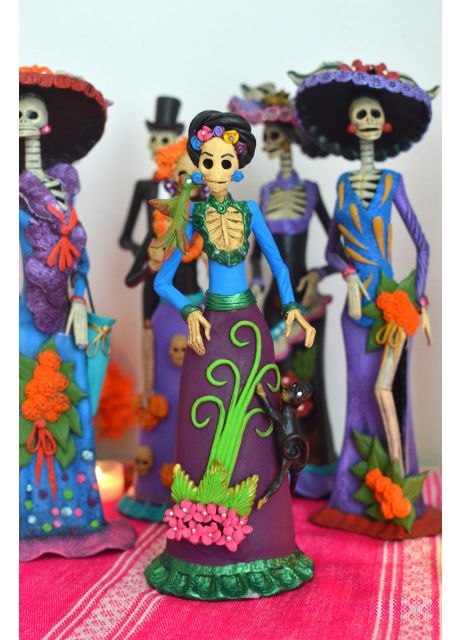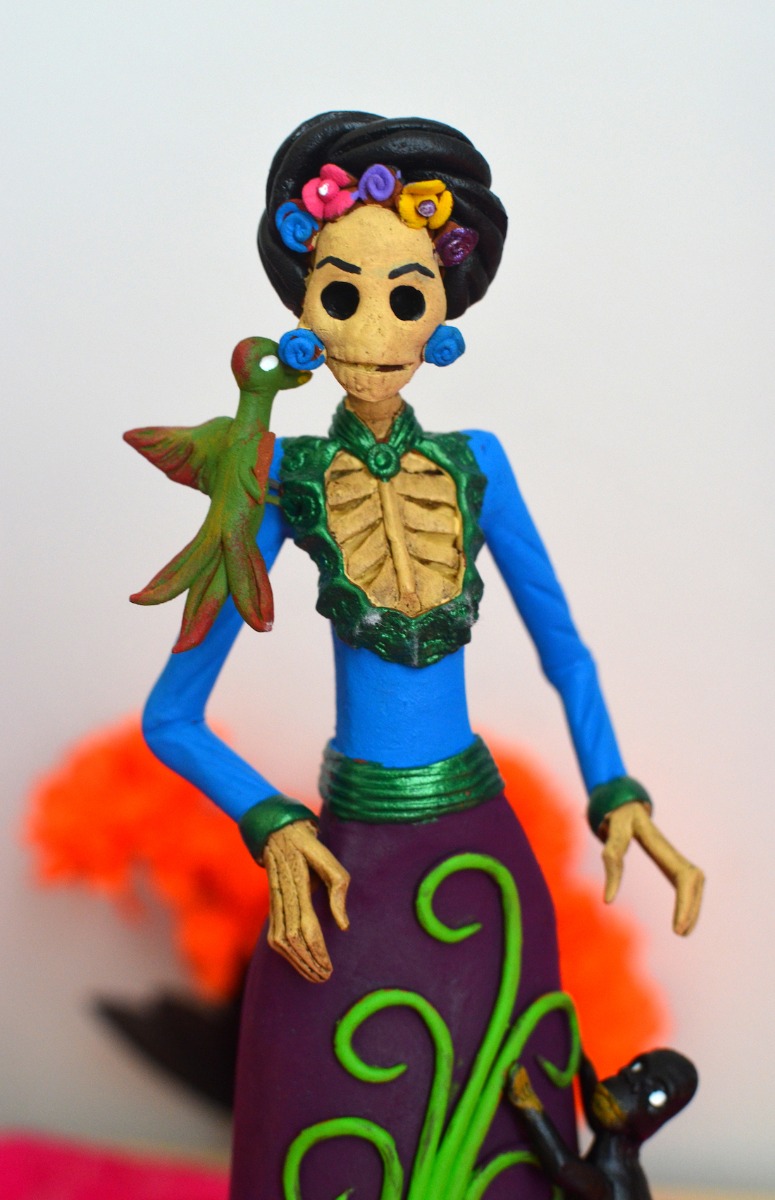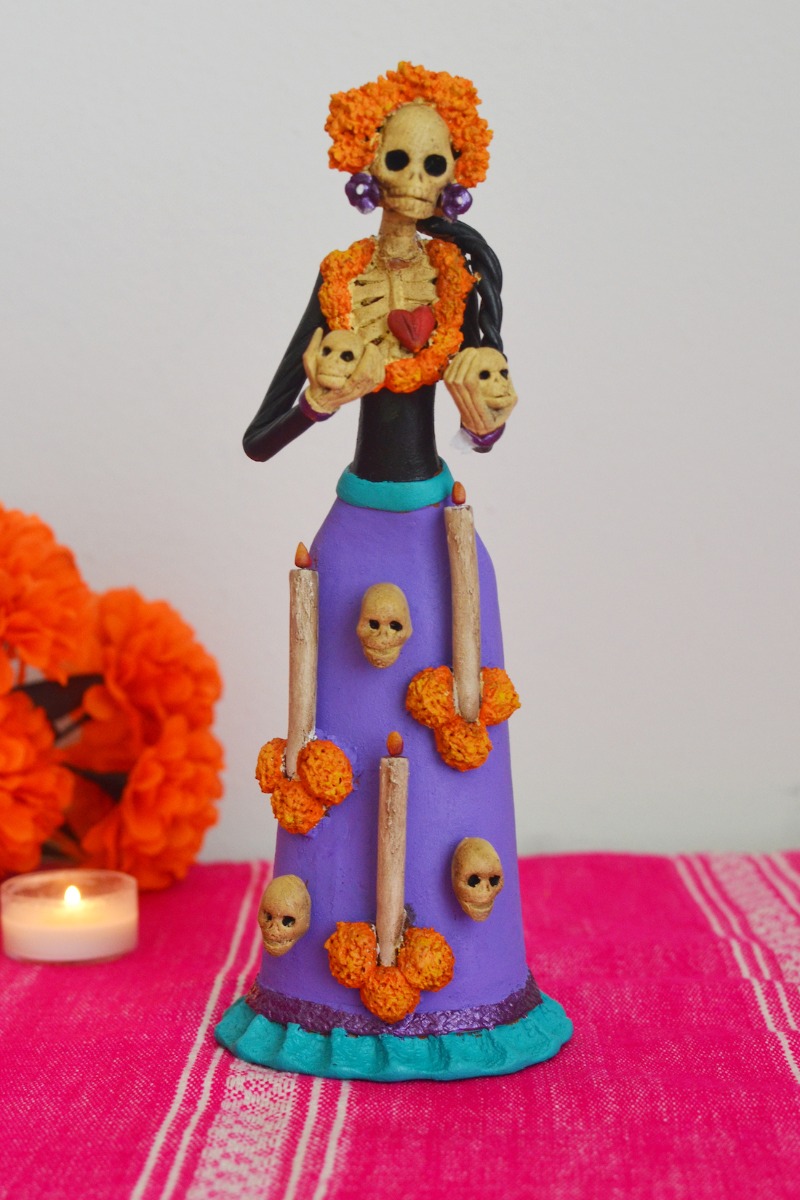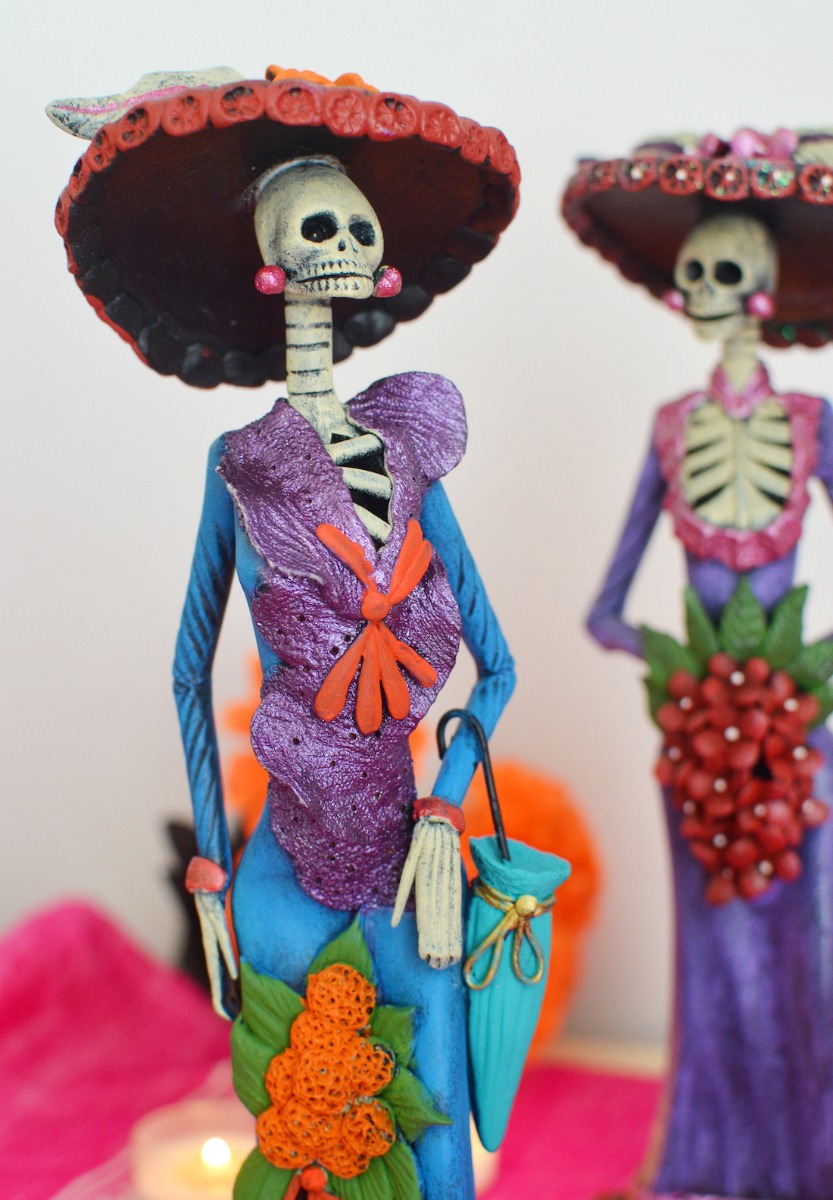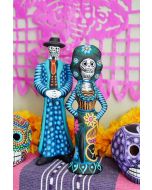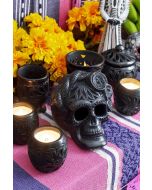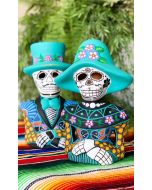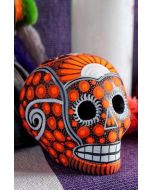(1) Hand carved and painted Catrina, 13” tall approx.
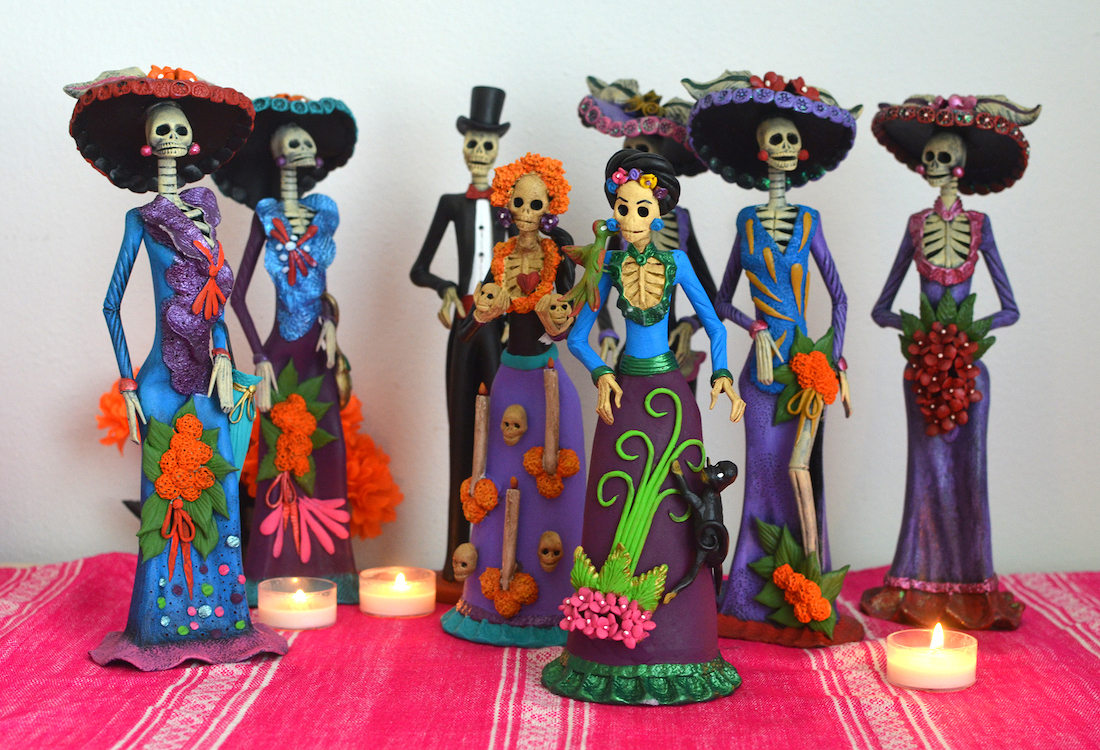
Catrina, the Grand Dame of Death, is a symbol often seen in Day of the Dead celebrations honoring ancestors and influential people who have passed from this world. La Catrina was brought to international notoriety when famed muralist, Diego Rivera used it in his 1947 mural, “Dream of a Sunday Afternoon in Alameda Park” featuring La Catrina holding hands with Rivera, Frida Kahlo, and many historical figures.
Artistry and Materials
These hand-painted Mexican Catrina figurines feature exquisite craftsmanship and vibrant colors. They're made from clay and are meticulously hand-painted by our skilled artisans. The intricate details on each Catrina, from the elaborate dresses to the ornate facial makeup, showcase the artists' talent and dedication to their craft.
Artistry and Materials
These hand-painted Mexican Catrina figurines feature exquisite craftsmanship and vibrant colors. They're made from clay and are meticulously hand-painted by our skilled artisans. The intricate details on each Catrina, from the elaborate dresses to the ornate facial makeup, showcase the artists' talent and dedication to their craft.
Day of the Dead and Symbolism
La Catrina has ties to the Aztec queen of the underworld, Mictecacihuatl, the original skeletal figure used in altars by indigenous people to celebrate their dead. It’s from these roots that La Catrina has become synonymous with Dia de Los Muertos, and a globally recognized figure that no altar should be without.
Day of the Dead and Symbolism
La Catrina has ties to the Aztec queen of the underworld, Mictecacihuatl, the original skeletal figure used in altars by indigenous people to celebrate their dead. It’s from these roots that La Catrina has become synonymous with Dia de Los Muertos, and a globally recognized figure that no altar should be without.
History of the Catrina
La Catrina was created in 1910 by Mexican Illustrator Jose Guadalupe Posada as a series of satirical lithographs of the Mexican elite wanting to be more like Europe than like Mexico. Interestingly, the Mexican Revolution began a year later in 1911. Posada’s work clearly highlighted the working-class frustration with the ruling class.
History of the Catrina
La Catrina was created in 1910 by Mexican Illustrator Jose Guadalupe Posada as a series of satirical lithographs of the Mexican elite wanting to be more like Europe than like Mexico. Interestingly, the Mexican Revolution began a year later in 1911. Posada’s work clearly highlighted the working-class frustration with the ruling class.
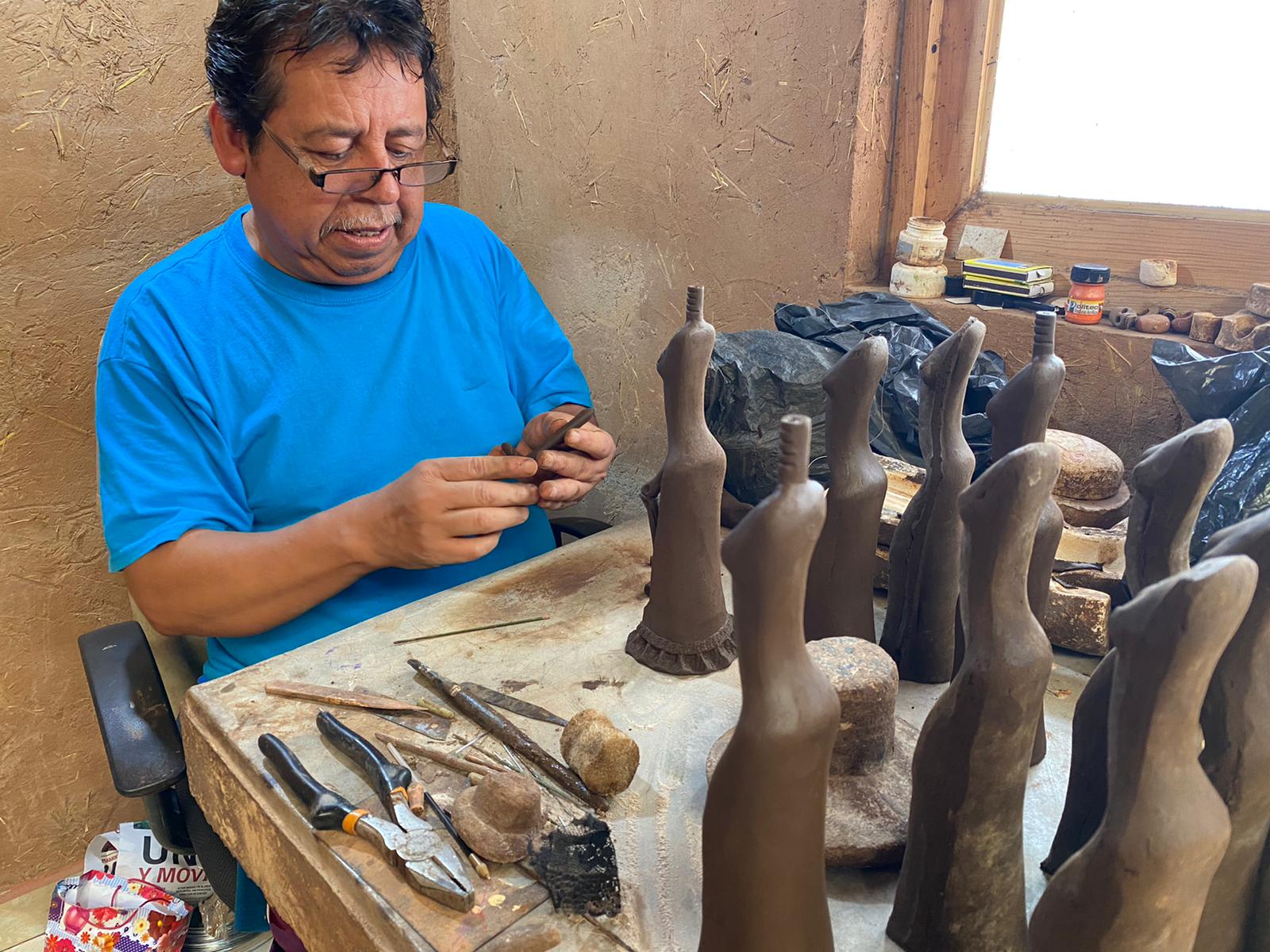
Fernando Posas Torres, a 3rd generation artisan of barro, and his wife Leonor Hernandez Cortes have been working barro their whole life. His grandparents and parents worked the traditional earthenware pots and plates, which are a staple of many Mexican restaurants around the world (the Michoacano style, the reddish hue and the yellow and green dotted flowers along the edge).
About 20 years ago, Fernando began to shift towards Catrinas and has not looked back since. He and his family hand roll, form, and build the Catrinas, while his wife Leonor focuses on the flowers and finishing touches. Their sons and daughters oversee painting the final pieces.
YOUR PURCHASE MAKES A DIFFERENCE:
- Artisan Made
- Preserves Tradition
- Supports Small Business
- Job Creator
- Hecho en Mèxico



